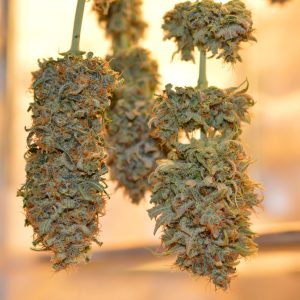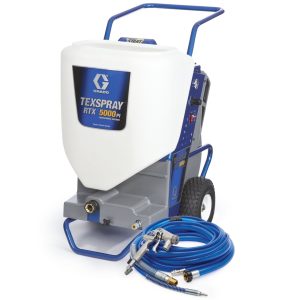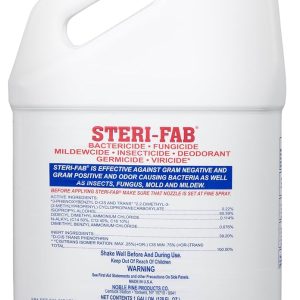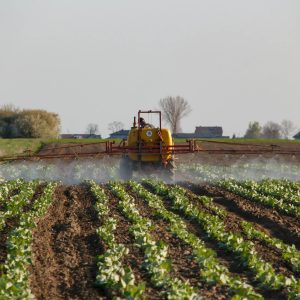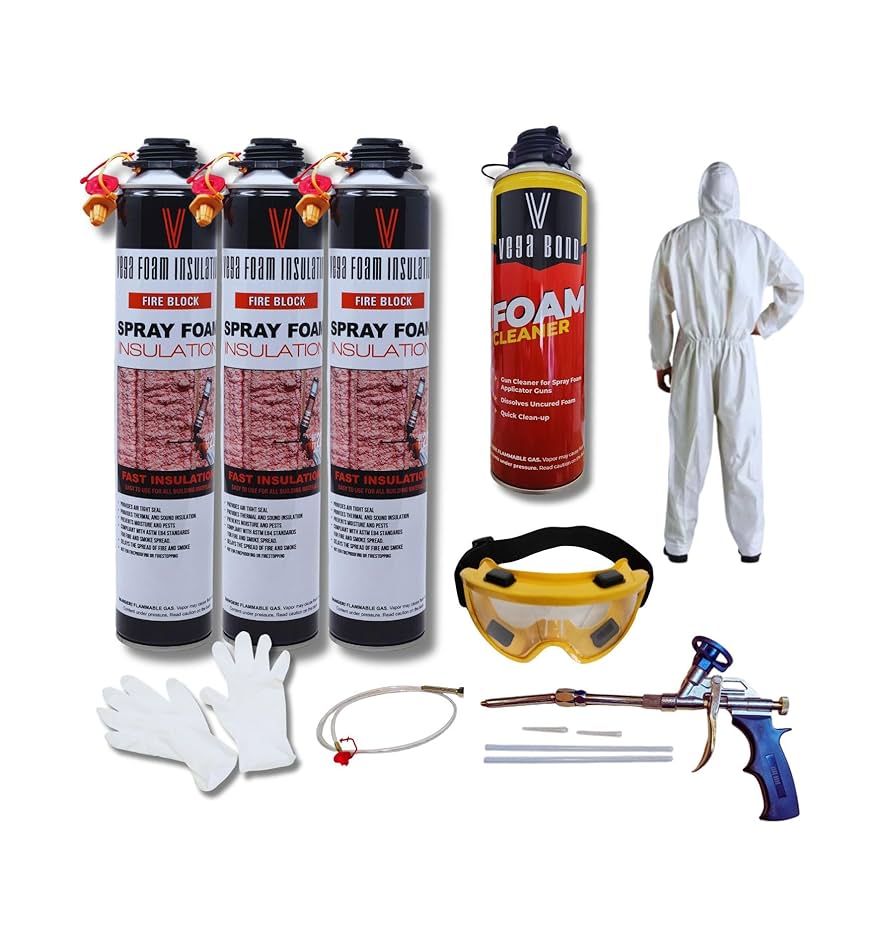
Fire safety remains a paramount concern in construction and insulation applications, driving innovation in protective materials and technologies. Campfire spray represents a cutting-edge advancement in fire-resistant foam solutions, combining superior insulation properties with enhanced fire protection capabilities. This specialized foam technology addresses critical safety requirements while delivering exceptional thermal performance across diverse applications.
What is Campfire Spray Foam Technology?
Campfire spray foam technology encompasses advanced fire-resistant insulation materials designed to provide dual benefits of thermal efficiency and fire protection. Fire retardant insulation is designed to stop flames and reduce the effect of the fire. There are two main types of spray foam insulation: open-cell and closed-cell. Closed-cell spray foam insulation is more dense and has a better fire resistance rating compared to open-cell insulation.
The technology incorporates specialized fire retardant compounds that significantly enhance the foam’s resistance to ignition and flame spread. Unlike traditional insulation materials, campfire spray solutions create protective barriers that actively resist fire propagation while maintaining superior insulating properties. These formulations typically include intumescent additives that expand when exposed to heat, forming a protective char layer that shields underlying materials from thermal damage.
Professional-grade campfire spray systems often utilize two-component polyurethane formulations enhanced with fire-retardant chemicals. The spray application method ensures comprehensive coverage, filling gaps and creating seamless barriers that traditional insulation methods cannot achieve. This technology has revolutionized fire safety protocols in construction, particularly in applications requiring both thermal efficiency and fire resistance.
Key Benefits of Campfire Spray Applications
Enhanced Fire Protection Capabilities
The primary advantage of campfire spray technology lies in its superior fire resistance properties. Spray foam insulation does contain levels of fire retardants that reduce flammability and smoke development, however, like many insulating materials, it is combustible unless treated with additional fire-resistant solutions. Advanced formulations address this limitation by incorporating higher concentrations of fire retardant compounds.
Key fire protection benefits include:
- Flame Spread Reduction: Significantly slower flame propagation rates compared to standard foam
- Smoke Development Control: Reduced toxic smoke generation during fire events
- Thermal Barrier Formation: Creates protective char layers when exposed to high temperatures
- Structural Integrity Maintenance: Helps preserve building structure during fire incidents
Superior Thermal Insulation Performance
Beyond fire protection, campfire spray foam delivers exceptional thermal insulation performance. Its outstanding adhesion properties make it suitable for a wide range of applications, including ceilings, walls, HVAC systems, ductwork, trailers, vans, and even pool areas. Easy to apply, this expanding foam can yield up to 20 board feet at a 1-inch thickness.
The closed-cell structure of premium campfire spray formulations provides superior R-values per inch compared to traditional insulation materials. This efficiency translates into significant energy savings, reduced heating and cooling costs, and improved indoor comfort levels. The foam’s expanding properties ensure complete coverage, eliminating thermal bridges that compromise insulation effectiveness.
Comprehensive Air Sealing Properties
Campfire spray applications create complete air barriers, addressing both insulation and air sealing requirements simultaneously. After spraying it to the place you want to fill in, it can expand to 30-60 times larger than its liquid form. Spray foam is used to insulate your walls, ceiling, loft, floors, and more. It is sprayed off in cavities and expands to constitute a seal over any cracks that cause unwanted airflow.
This comprehensive sealing capability eliminates drafts, reduces energy loss, and prevents moisture infiltration that can lead to mold growth and structural damage. The seamless application ensures no gaps or voids that might compromise the building envelope’s integrity.
Applications and Use Cases for Campfire Spray
Residential Construction Applications
Campfire spray technology finds extensive use in residential construction projects where fire safety and energy efficiency are priorities. The material’s versatility makes it suitable for various residential applications:
Primary residential applications:
- Attic Insulation: Creates fire-resistant thermal barriers in attic spaces
- Wall Cavity Fill: Provides comprehensive insulation and fire protection within wall assemblies
- Basement Applications: Offers moisture resistance and fire protection in below-grade installations
- Crawl Space Encapsulation: Creates controlled environments while maintaining fire safety standards
Residential applications benefit significantly from campfire spray’s ability to conform to irregular surfaces and fill complex cavities. The material’s adhesion properties ensure long-term performance without settling or deterioration common in traditional insulation materials.
Commercial and Industrial Uses
Commercial and industrial applications demand higher performance standards, making campfire spray technology particularly valuable. Touch N Seal Two Component Class I Fire Retardant Foam Kits are suitable for use in commercial, residential, transportation and many other applications.
Commercial application categories:
- Warehouse Facilities: Large-scale insulation with enhanced fire protection
- Manufacturing Plants: Process area insulation requiring fire resistance
- Cold Storage Facilities: Thermal efficiency with safety compliance
- Data Centers: Critical infrastructure protection with fire safety requirements
Industrial applications often require specialized formulations meeting specific building codes and safety standards. Campfire spray systems can be customized to meet these demanding requirements while providing superior performance characteristics.
Specialty and Transportation Applications
The transportation industry has embraced campfire spray technology for mobile applications requiring both insulation and fire safety. Applications include recreational vehicles, commercial trailers, marine vessels, and specialized transportation equipment.
Transportation applications benefit from campfire spray’s lightweight properties, superior adhesion, and resistance to vibration-induced deterioration. The material’s fire resistance provides additional safety margins critical in confined mobile environments.
Installation Process and Professional Techniques
Equipment Requirements and Setup
Professional campfire spray installation requires specialized equipment capable of handling two-component systems at precise mixing ratios. High-pressure spray equipment ensures proper material application and optimal foam expansion characteristics.
Essential equipment includes:
- High-Pressure Spray Systems: Deliver precise mixing ratios and application rates
- Temperature Control Units: Maintain optimal material temperatures for consistent performance
- Safety Equipment: Comprehensive protective gear for applicator safety
- Surface Preparation Tools: Ensure proper substrate preparation for optimal adhesion
Professional installation teams undergo specialized training to master application techniques and safety protocols. Proper equipment maintenance and calibration ensure consistent results and material performance.
Surface Preparation and Application Methods
Successful campfire spray applications begin with thorough surface preparation. Substrates must be clean, dry, and free from contaminants that might compromise adhesion or performance. Temperature and humidity conditions significantly impact application success and final properties.
Critical preparation steps:
- Surface Cleaning: Remove dust, debris, and contaminants
- Moisture Assessment: Ensure surfaces are adequately dry
- Temperature Verification: Confirm optimal application conditions
- Masking and Protection: Shield areas not requiring treatment
Application technique directly impacts final performance characteristics. Proper spray patterns, pass techniques, and lift thickness control ensure uniform density and optimal fire resistance properties.
Quality Control and Performance Verification
Professional campfire spray installations include comprehensive quality control measures to verify performance specifications. Visual inspection identifies potential defects, while density measurements confirm proper application parameters.
Quality assurance protocols:
- Density Testing: Verify foam density meets specifications
- Adhesion Assessment: Confirm proper substrate bonding
- Thickness Verification: Ensure adequate coverage depths
- Visual Inspection: Identify and address application defects
Post-application curing periods allow full chemical reactions to complete, achieving final performance characteristics. Professional installations include warranty provisions covering material performance and application quality.
Safety Considerations and Building Code Compliance
Fire Safety Standards and Regulations
Campfire spray applications must comply with relevant building codes and fire safety standards. Fire code requires a 5 or 15 minutes intumescent coating to be painted over the foam. For a coating to be considered intumescent, it must expand when exposed to heat, forming a char that insulates and protects the underlying material from fire.
Building codes often specify additional protective measures for foam insulation applications. These requirements may include thermal barriers, ignition barriers, or specific installation limitations depending on the application location and building classification.
Key regulatory considerations:
- Building Code Compliance: Meet local and national construction standards
- Fire Rating Requirements: Achieve specified fire resistance ratings
- Installation Limitations: Adhere to code-specified application restrictions
- Documentation Requirements: Maintain proper installation records
Professional installers maintain current knowledge of applicable codes and standards, ensuring installations meet all regulatory requirements. This expertise protects building owners from compliance issues and liability concerns.
Health and Safety Protocols
Campfire spray installation requires strict adherence to health and safety protocols protecting both applicators and building occupants. Material safety data sheets provide comprehensive guidance on safe handling and application procedures.
Essential safety measures:
- Personal Protective Equipment: Comprehensive protection for applicators
- Ventilation Requirements: Adequate air circulation during application
- Occupant Protection: Temporary relocation during installation
- Material Storage: Proper handling and storage of chemical components
Professional installations prioritize safety throughout the entire process, from material delivery through final cleanup. Established safety protocols minimize risks while ensuring optimal application conditions.
Comparing Campfire Spray with Traditional Insulation
Performance Characteristics Analysis
Campfire spray technology offers significant advantages over traditional insulation materials in multiple performance categories. The combination of fire resistance and thermal efficiency provides superior overall value compared to conventional alternatives.
Performance comparison factors:
| Characteristic | Campfire Spray | Fiberglass Batts | Cellulose |
|---|---|---|---|
| R-Value per Inch | 6.0-7.0 | 3.2-3.8 | 3.6-3.8 |
| Air Sealing | Excellent | Poor | Fair |
| Fire Resistance | Enhanced | Limited | Variable |
| Moisture Resistance | Excellent | Poor | Fair |
| Installation Speed | Fast | Moderate | Slow |
The comprehensive performance advantages of campfire spray often justify higher initial costs through long-term energy savings and enhanced safety characteristics.
Cost-Benefit Analysis Considerations
While campfire spray applications typically involve higher upfront costs compared to traditional insulation materials, the total cost of ownership often favors foam solutions. Energy savings, reduced maintenance requirements, and enhanced safety characteristics contribute to superior long-term value.
Economic factors include:
- Energy Efficiency Gains: Reduced heating and cooling costs
- Installation Labor Savings: Faster application compared to traditional methods
- Maintenance Reduction: Minimal ongoing maintenance requirements
- Insurance Considerations: Potential premium reductions for enhanced fire safety
Life-cycle cost analyses frequently demonstrate favorable returns on investment for campfire spray applications, particularly in demanding applications where performance requirements justify premium materials.
Maintenance and Long-Term Performance
Performance Monitoring and Assessment
Campfire spray installations typically require minimal maintenance while providing decades of reliable performance. Regular cleaning, sealing, and … should be monitored to ensure optimal performance. The material provides dual benefits: enhanced fire safety and improved thermal insulation.
Periodic inspections can identify potential issues before they compromise performance. Visual assessments focus on signs of damage, deterioration, or moisture infiltration that might affect insulation effectiveness or fire resistance properties.
Maintenance considerations:
- Visual Inspection: Regular assessment for damage or deterioration
- Performance Monitoring: Energy usage tracking for efficiency verification
- Moisture Assessment: Detection of potential water infiltration
- Safety System Integration: Coordination with fire detection and suppression systems
Proper maintenance protocols extend service life while maintaining optimal performance characteristics throughout the installation’s operational period.
Troubleshooting Common Issues
Despite campfire spray’s robust performance characteristics, specific conditions or installation defects can impact long-term effectiveness. Understanding common issues and appropriate remediation strategies helps maintain optimal performance.
Common performance issues:
- Adhesion Failures: Typically result from inadequate surface preparation
- Density Variations: May indicate improper application parameters
- Thermal Bridging: Can occur at structural penetrations or interfaces
- Moisture Infiltration: Usually indicates envelope deficiencies requiring attention
Professional assessment and remediation ensure issues are properly addressed without compromising fire safety or thermal performance characteristics.
For those seeking comprehensive insulation solutions, closed cell spray foam kits offer additional options for specialized applications requiring premium performance characteristics.
Advanced Technologies and Future Developments
Innovative Formulation Advances
Campfire spray technology continues evolving through advanced chemistry and manufacturing innovations. “That foam is highly insulative and ends up scattering all of the heat, completely protecting the substrate underneath it.” The silica forms an aerogel – a solid, porous structure that is a particularly good insulator.
Research focuses on developing enhanced fire resistance properties while maintaining or improving thermal performance characteristics. New formulations incorporate advanced fire retardant compounds, improved blowing agents, and enhanced durability characteristics.
Emerging technology trends:
- Nano-Technology Integration: Enhanced properties through nano-scale additives
- Bio-Based Formulations: Sustainable chemistry reducing environmental impact
- Smart Materials: Responsive characteristics adapting to environmental conditions
- Enhanced Safety Profiles: Reduced toxicity while maintaining performance
These developments promise even greater performance capabilities while addressing environmental and safety concerns associated with traditional chemical formulations.
Market Trends and Industry Evolution
The campfire spray market continues expanding as awareness of fire safety benefits increases alongside energy efficiency requirements. Building codes increasingly recognize the value of combined insulation and fire protection systems.
Industry trends indicate growing adoption across residential, commercial, and industrial applications. Professional contractor networks expand to meet increasing demand while maintaining quality standards essential for proper installation and performance.
Frequently Asked Questions About Campfire Spray
What makes campfire spray different from regular spray foam insulation?
Campfire spray incorporates specialized fire retardant compounds that significantly enhance resistance to ignition and flame spread compared to standard spray foam. These formulations create protective char layers when exposed to heat while maintaining superior insulation properties.
Is campfire spray safe for residential applications?
Yes, campfire spray is safe for residential use when properly installed by certified professionals. The enhanced fire resistance actually improves home safety compared to traditional insulation materials, while proper installation protocols ensure occupant protection.
How long does campfire spray insulation last?
Quality campfire spray installations typically provide 30-50 years of reliable performance with minimal maintenance requirements. The material’s chemical stability and adhesion properties ensure long-term effectiveness without settling or deterioration.
Does campfire spray require special building permits?
Campfire spray installations typically require standard building permits, similar to other insulation materials. Some jurisdictions may have specific requirements for fire-rated installations, making professional consultation valuable for compliance assurance.
Can campfire spray be applied over existing insulation?
In many cases, campfire spray can be applied over existing insulation materials, though specific conditions and compatibility must be evaluated. Professional assessment ensures optimal performance and addresses any potential issues.
What is the R-value of campfire spray insulation?
Campfire spray formulations typically achieve R-values of 6.0-7.0 per inch for closed-cell applications, significantly higher than traditional insulation materials. This efficiency contributes to enhanced energy savings and thermal comfort.
How much does campfire spray installation cost?
Campfire spray installation costs vary based on project size, complexity, and regional factors. While initial costs exceed traditional insulation materials, long-term energy savings and enhanced safety often justify the investment.
Ready to enhance your property’s safety and efficiency? Contact certified campfire spray professionals today to explore how this revolutionary technology can transform your insulation system while providing superior fire protection. Don’t compromise on safety – choose campfire spray solutions for your next construction or renovation project.
